Mineral identification
.......... .......... .......... ..........
| Azurite |
|
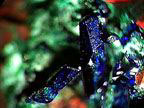 |
CU3(CO3)2(OH)2
Azurite is a secondary ore of copper and usually associated with malachite, and is part of the carbonate group. Malachite and azurite are formed in the same way, but azurite is a bright blue and is the rarer of the two minerals. Sources are Arizona, Africa, Australia, and France. |
| Calcite |
|
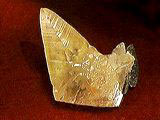 |
Calcite is formed in the veins of limestone and is one of the more common minerals. Optical calcite has a special property that produces a double image when you look through the mineral. This double image is produced as light reflects off the atoms in the mineral's structure, splitting into two rays. |
| Fluorite |
|
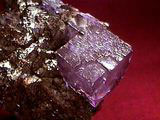 |
CaF2
Flourite is a mineral that combines calcium and fluoride. It forms crystals shaped like cubes within limestone. Flourite is associated with lead ores and is one of the most popular minerals among collectors. Flourite appears in many colors and is used as flux which lowers the melting point in the manufacturing of steel. Sources are Mexico, China, Italy, and Illinois. |
| Hematite |
|
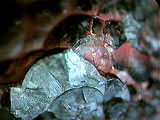 |
Fe2O3
Hematite is an iron ore occuring in massive form and has a steel gray to reddish color. One of the heaviest ores found, hematite contains about 70% iron. Hematite is smooth and non-crystalline. Mostly found in sedimentary rocks, it can also form large replacement deposits. Sources are the United States, Canada, and Brazil. |
| Malachite |
|
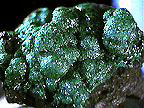 |
CU2C03(OH)2
Malachite, a minor ore of copper, is a highly popular semi-precious stone. It forms near the surface of the Earth when copper-rich water interacts with carbonate-rich rocks. It commonly grows as groups of crystals that form concentric rings, and the bulls eye and ringed patterns in widely varying shades of green make malachite popular among collectors. A decorative stone, it was used for columns and facades of prominent buildings in Russia. Sources are Zaire, the United States, and Russia. |
| Opal |
|
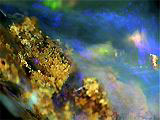 |
SiO2nH2O
Opal forms in cracks or cavities in "near surface" volcanic rocks, in deposits from hot springs, and in sediments. It has no crystalline structure (no regular arrangement of atoms), and is therefore considered amorphous or uncrystallized. Instead, chains of silicon and oxygen are packed into tiny sheres. Diffraction of light by these spheres produces "opalescence", the multi-colored flashes of light that give the stone its beauty. It is this play of color that determines an opal's value. To prevent cracks, opal should be treated periodically with castor oil. The source is Australia. |
| Pyrite |
|
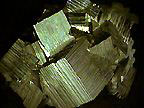 |
FeS2
Pyrite is a metallic mineral composed of iron and sulfur. It forms in a wide range of environments including hydrothermal veins and igneous rocks, in slates, and in shales. The crystals appear in a variety of forms: striated cubes, pyritohedral crystals, radiated disk forms, and pyritized fossils. known as "Fool's Gold", it is the most common sulfide mineral and occurs worldwide. Pyrite was used by ancient Greeks and Romans for mirrors and jewelry. Sources include the United States, Spain, and Italy. |
| Quartz |
|
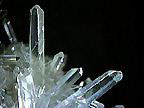 |
Clear crystal quartz is the most common mineral. It is composed of silicon and oxygen. It forms when silica-rich solutions occur in underground cavities and cracks. Quartz can be found in every class of rock and can be divided into two groups on the basis of appearance: crystallline and micro-crystallilne.* |
| Rhodochrocite |
|
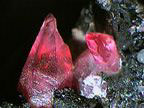 |
McCO2
Rhodochrosite is a rose-colored mineral composed of manganese, carbon, and oxygen. A carbonate, rhodochrosite is formed in hydrothermal veins associated with copper, lead, and silver sulfides. This banded rhodochrosite displays multicolored patterns within the concretionary, or hardened, masses. These colors and patterns make rhodochrosite one of the most attractive minerals. The source is Argentina. * |
| Sulfur |
|
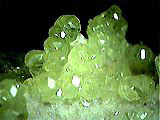 |
Su
Sulfur is one of the native elements. The color varies from lemon yellow when the mineral is pure to a brownish colore when it contains impurities. It is usually associated with volcanic rocks such as pumice, however, sulfur sometimes occurs in sedimentary rocks. Sulfur should be kept from direct sunlight and handled as little as possible as even warm hands can cause the crystals to expand and crack. Sources are Mexico, Sicily, and Nevada. * |
| Tourmaline |
|
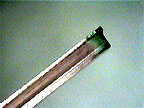 |
Tourmaline, a complex borosillicate, is the mineral group with the broadest dispay of gemstone colors. It is formed in igneous and metamorphic rocks and is quite common in pegmatite dikes associated with intrusions of granite. There are several different mineral varieties but only clear colorful ones are used as gems. Sources are Brazil, pakistan, and California.* |
| * Information derived from Mineral, Rock & Fossil Collection Guide, Natural Wonders, 2000 |
|
|
|